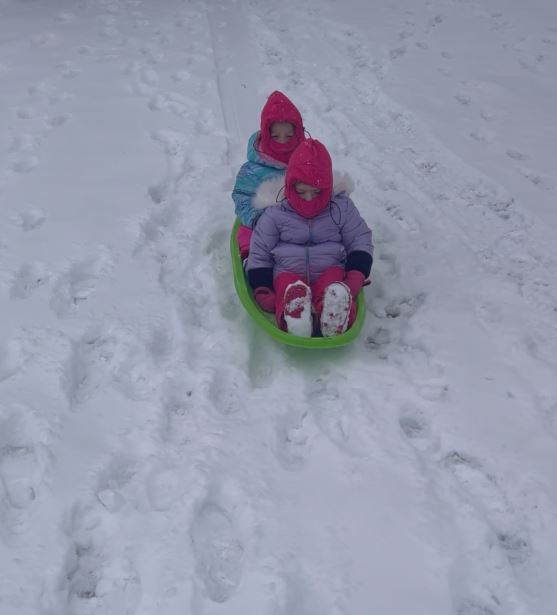A medida que el tiempo se calienta, es importante ser consciente de cómo mantener a los niños (¡y a nosotros mismos!) a salvo del calor y la humedad. Cuando el índice de calor (“sensación térmica”) supera los 90° F, los niños son especialmente vulnerables a las afecciones relacionadas con el calor. Este gráfico del Servicio Meteorológico Nacional muestra cómo se calcula el índice de calor y cuándo las temperaturas se vuelven peligrosas. 
Algunas formas de mantener seguros a los niños cuando hace calor (consejos de los CDC y HealthyChildren.org):
- Traslada el tiempo al aire libre a las primeras horas del día, antes de que el sol esté alto.
- Aplícate y vuelve a aplicarte protector solar: las quemaduras solares pueden provocar deshidratación e impedir que el cuerpo regule la temperatura adecuadamente. La protección solar es importante para personas de todas las etnias y tonos de piel.
- Ten agua potable accesible en todo momento, y fomenta (¡y modela!) las pausas frecuentes para beber agua.
- Recomienda a las familias que vistan ropa holgada, ligera y de colores claros. Utiliza ropa protectora contra los rayos UV y sombreros para mayor seguridad.
- Mantente fresco con juegos acuáticos seguros. Un aspersor, botellas nebulizadoras o una mesa de agua pueden ayudar a regular la temperatura corporal y mantener a todo el mundo de buen humor.
- Conoce los signos de las enfermedades relacionadas con el calor y prepárate para actuar en consecuencia.
The winter season brings with it added hazards. Child care providers can take steps to keep children safe from winter hazards.
Children need extra protection from cold weather as they are not able to regulate their body temperature. It’s vital that children wear appropriate clothing for the weather.
- Wear layers of loose-fitting, lightweight clothing
- Wear a hat, coat, and gloves/mittens
- Caregivers should check children’s extremities for normal color and warmth at least every 15 minutes
This infographic created by the National Weather Service serves as a great tool to help guide what clothing is needed in the cold weather.
For many of us, winter is sticking around for a few more weeks, which means more fun in the snow. Remember, there is no such thing as bad weather; there is just bad clothing.
Playing outside during cold weather is very beneficial for children.
It builds resilience, helping children learn to cope with uncomfortable or challenging situations, and builds mental and emotional strength.
It improves creativity and imagination; being outside provides endless imaginative play and exploration opportunities.
It promotes physical activity, playing in the snow, and engaging in winter sports like sledding, skating, and skiing supports physical activity and healthy habits.
Lastly, it enhances sensory experiences; snow, and ice provide unique sensory experiences that stimulate and calm the senses, helping children develop sensory integration skills.
Stephanie McKinstry owner of Caterpillar Clubhouse Nature Preschool, shares some fun photos of her program enjoying the snow!






